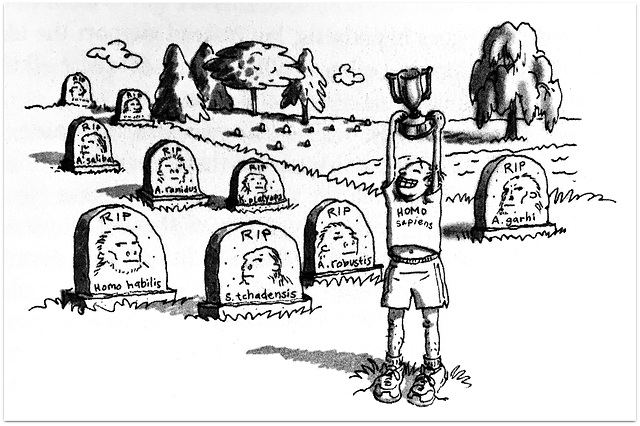Do Plants Think?
Fog
Pizza Hut / ಪೀಜಾ ಹಟ್
Factors related to the outcomes of national crisis…
Snow lingers
Broken
Factors related to the outcomes of national crises…
Cabrillo Lighthouse
1/3 of my fellow citizens
Ford
Ford
Cabrillo Lighthouse
The Wheel
The fall
PLATE 6.5
Lonely sentinels
My ilk, waiting for the sun-set
"Day and Night" ~ Tiutchev
Heating interior of Lighthouse keepers room
Lighthouse keeper's kitchen
KINGFISHER
A day of fog
San Diego
Dusk
Dusk beyond
Wall Hanging
Meadow
WRITTEN IN STONE
Jeep
Tree Trunk
Amidst all the sundries!
Consolation
I believe the world is round
Flight of the alone to the alone
Super sweet
Time
Weather report
Weather report
See also...
Keywords
Authorizations, license
-
Visible by: Everyone -
Attribution + non Commercial
- Photo replaced on 08 Aug 2020
-
25 visits
R.I.P


Our luck didn't stop with the physical properties of the universe. S.tchadensis, O.tugenesis, A. ramidus, A. anamensis, A. afarenesis, K. platyops, A. garhi, A. sediba, A. aethiopicus, A. robustus, P. boisei, H. habilis, H. erectus, and H. georgicus -- among other hominid species -- all went extinct. even the Neanderthals went extinct. we alone made it.
www.youtube.com/watch?v=RgHOUWJA190
www.youtube.com/watch?v=RgHOUWJA190
- Keyboard shortcuts:
Jump to top
RSS feed- Latest comments - Subscribe to the comment feeds of this photo
- ipernity © 2007-2024
- Help & Contact
|
Club news
|
About ipernity
|
History |
ipernity Club & Prices |
Guide of good conduct
Donate | Group guidelines | Privacy policy | Terms of use | Statutes | In memoria -
Facebook
Twitter

Sign-in to write a comment.